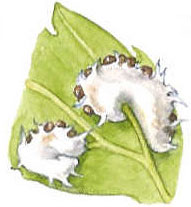|
Hardy Fern Home Athyrium resources All Ferns � Woodsiaceae �� Athyrium
�Other Genera
|
| Athyrium Earlier placement: | ||
Lady fern | ||
|
Etymology
Greek: From athyrium meaning a small door. The indusium is hinged on one side.
Description
Rhizome: short-creeping or erect.
Frond: deciduous, monomorphic. Stipe: deeply grooved above, swollen at base, scaly, vascular bundles: 2, lunate, uniting to a U-shape above. Blade: 2-pinnate-pinnatifid, linear to bradly triangular, herbaceous, below: absent or of linear to lanceolate scales or 1-celled glands. costae V-grooved above, continuous from rachis to costae, segments serrate or crenate, veins veins free, simple or forked. Sori: linear or oblong or j-shaped (round), in 1 row between midrib and margin, indusium: shape of sori (absent), sinus, sporangia: brownish.
Distinctive Characteristics
Dichotomous keys are unsuccessful in keying out this genus, i.e., it is poorly circumscribed. In the main it is closest to Deparia and Diplazium, sharing with them 2 vascular bundles and rachis/costa grooves on the upper side. These two genera and most Athyrium have elongate sori. It is separated from Deparia by deeper grooves and continuity from rachis to costa vs. discontinuous in Deparia, and from Diplazium on even skimpier grounds.
|
|
|

Athyrium. Cross-sections from base of stipe progressively higher for A. alpestre, a-d, and A. felix-femina, e-g. �Illustration from Scandinavian Ferns by Benjamin �llgaard and Kirsten Tind, Rhodos, 1993. |
